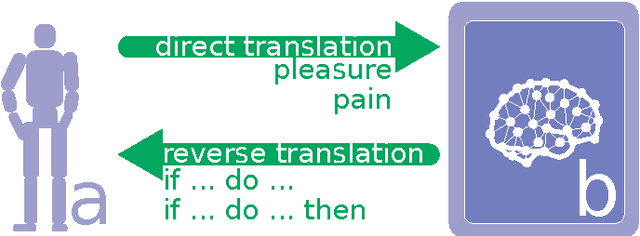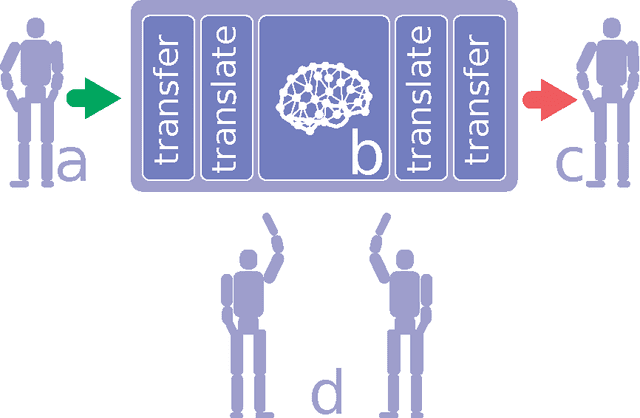Alexander Tchitchigin
Neuromorphic Robot Dream
Jul 27, 2016
Abstract:In this paper we present the next step in our approach to neurobiologically plausible implementation of emotional reactions and behaviors for real-time autonomous robotic systems. The working metaphor we use is the "day" and the "night" phases of mammalian life. During the "day phase" a robotic system stores the inbound information and is controlled by a light-weight rule-based system in real time. In contrast to that, during the "night phase" information that has been stored is transferred to a supercomputing system to update the realistic neural network: emotional and behavioral strategies.
A Cognitive Architecture for the Implementation of Emotions in Computing Systems
Jun 09, 2016



Abstract:In this paper we present a new neurobiologically-inspired affective cognitive architecture: NEUCOGAR (NEUromodulating COGnitive ARchitecture). The objective of NEUCOGAR is the identification of a mapping from the influence of serotonin, dopamine and noradrenaline to the computing processes based on Von Neuman's architecture, in order to implement affective phenomena which can operate on the Turing's machine model. As basis of the modeling we use and extend the L\"ovheim Cube of Emotion with parameters of the Von Neumann architecture. Validation is conducted via simulation on a computing system of dopamine neuromodulation and its effects on the Cortex. In the experimental phase of the project, the increase of computing power and storage redistribution due to emotion stimulus modulated by the dopamine system, confirmed the soundness of the model.
Robot Dream
Mar 09, 2016
Abstract:In this position paper we present a novel approach to neurobiologically plausible implementation of emotional reactions and behaviors for real-time autonomous robotic systems. The working metaphor we use is the "day" and "night" phases of mammalian life. During the "day" phase a robotic system stores the inbound information and is controlled by a light-weight rule-based system in real time. In contrast to that, during the "night" phase the stored information is been transferred to the supercomputing system to update the realistic neural network: emotional and behavioral strategies.
 Add to Chrome
Add to Chrome Add to Firefox
Add to Firefox Add to Edge
Add to Edge